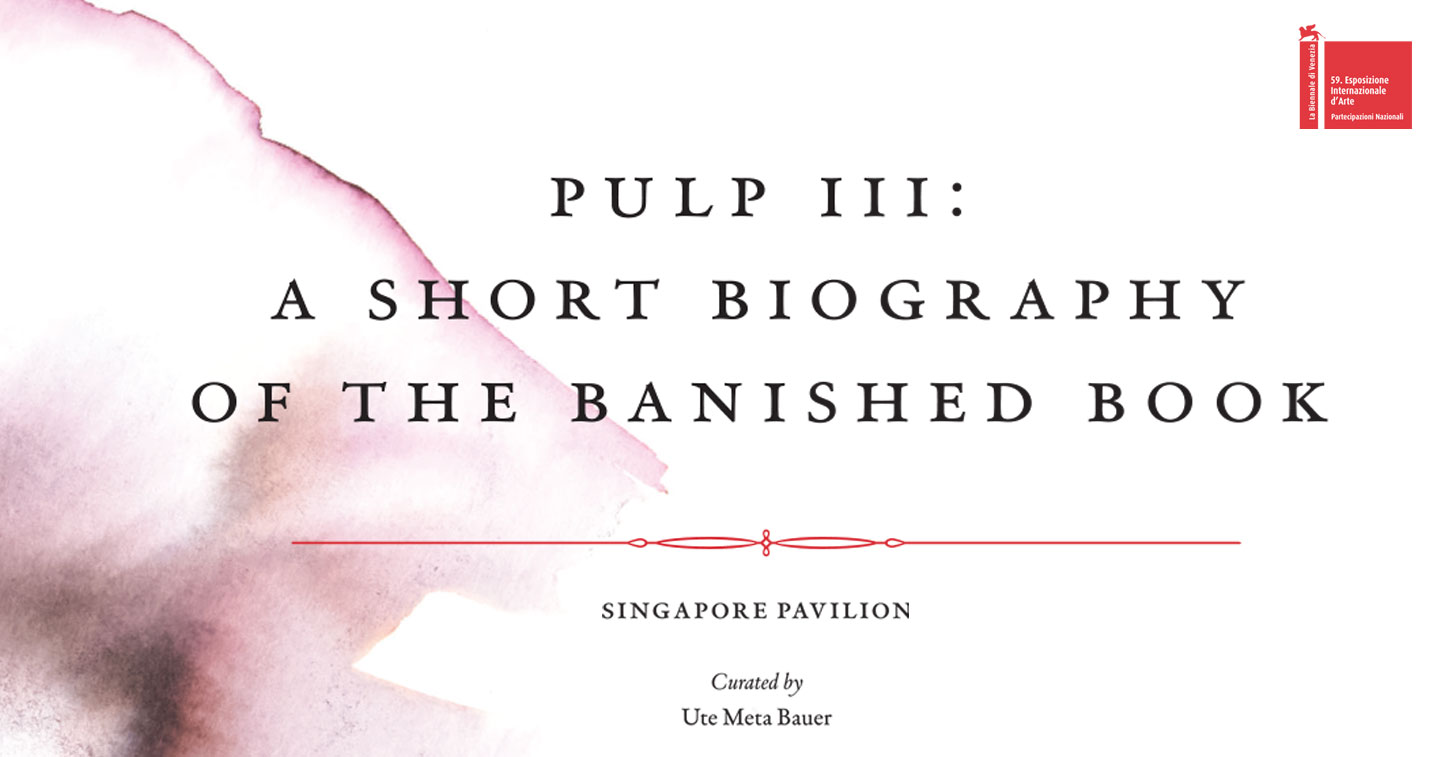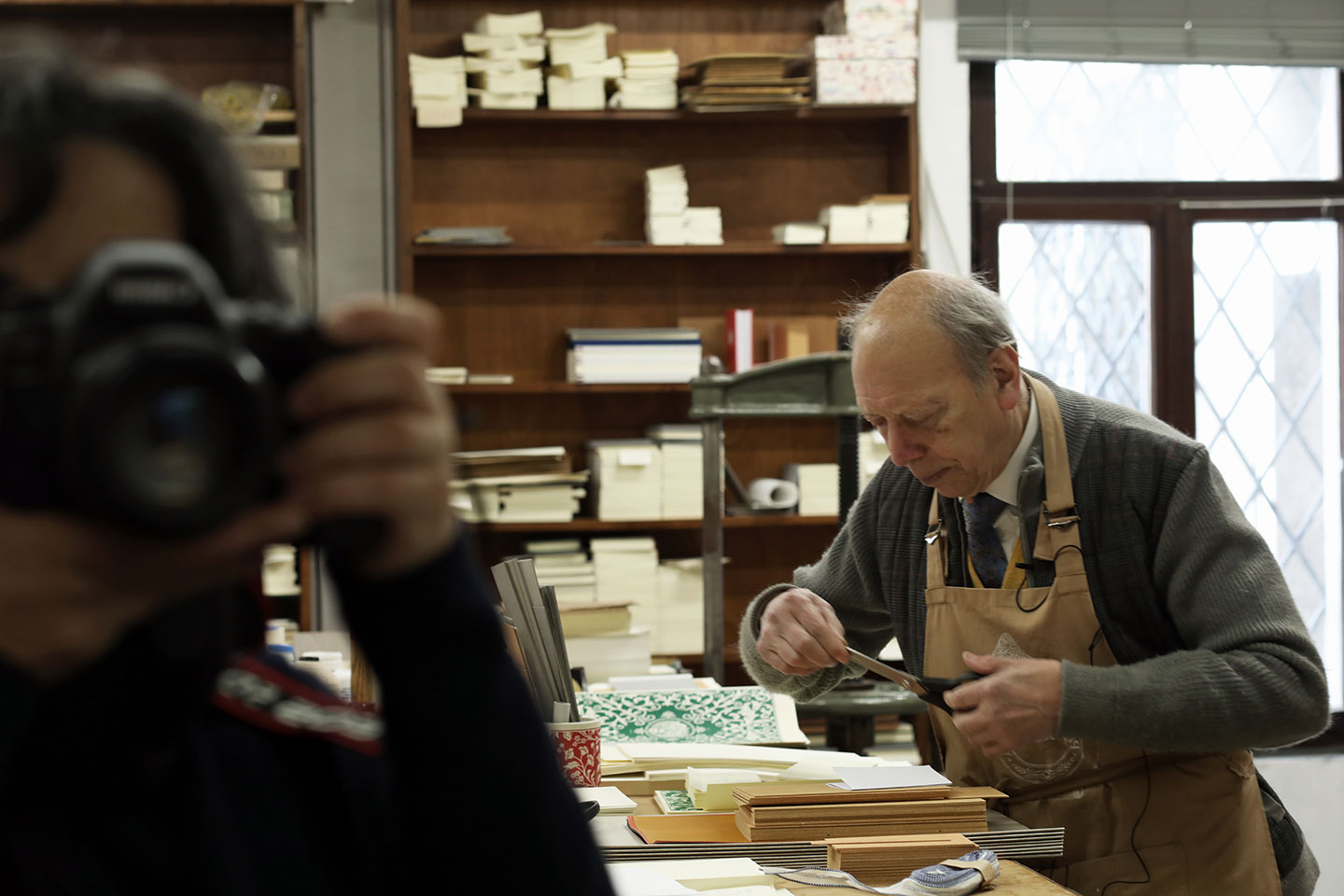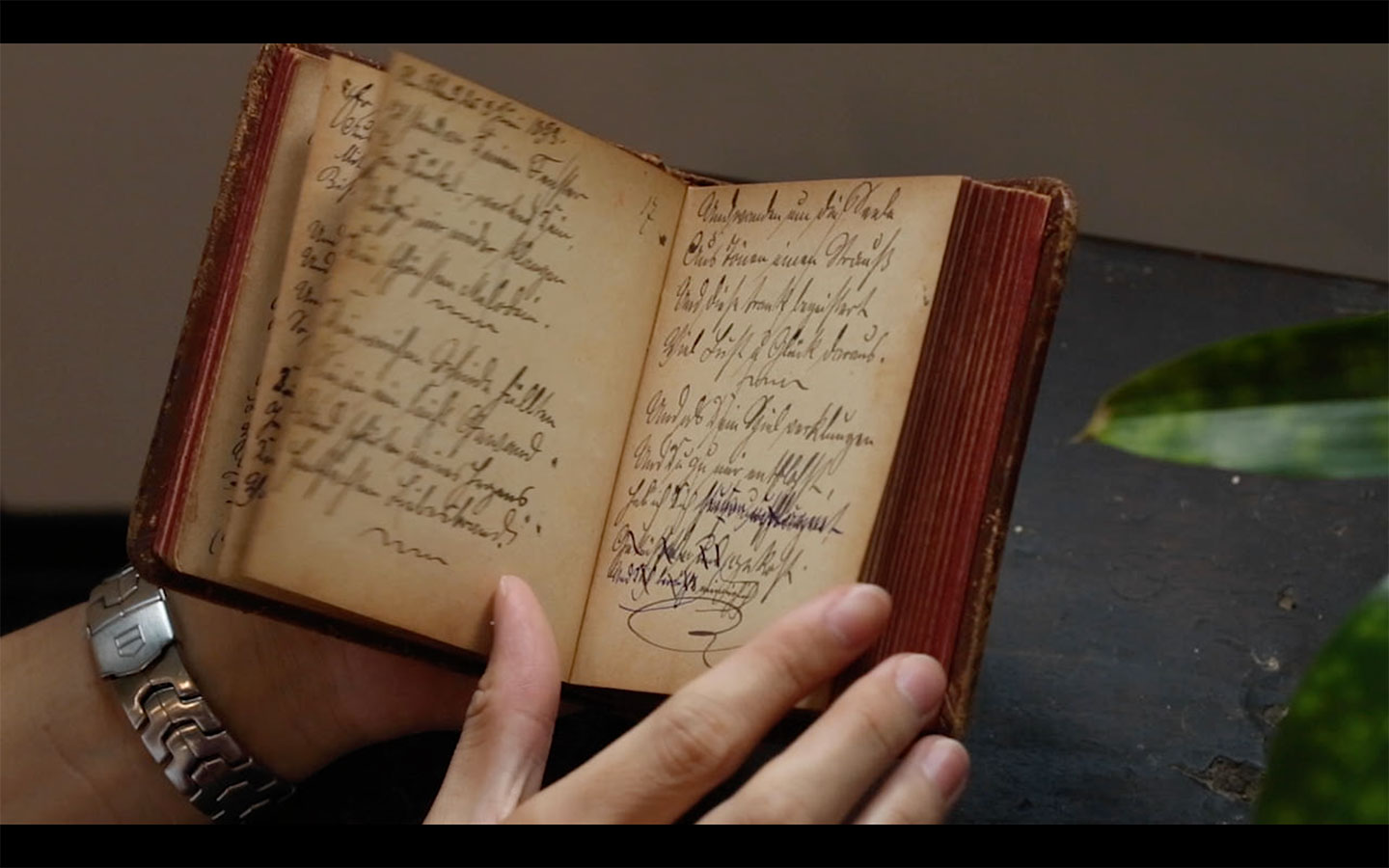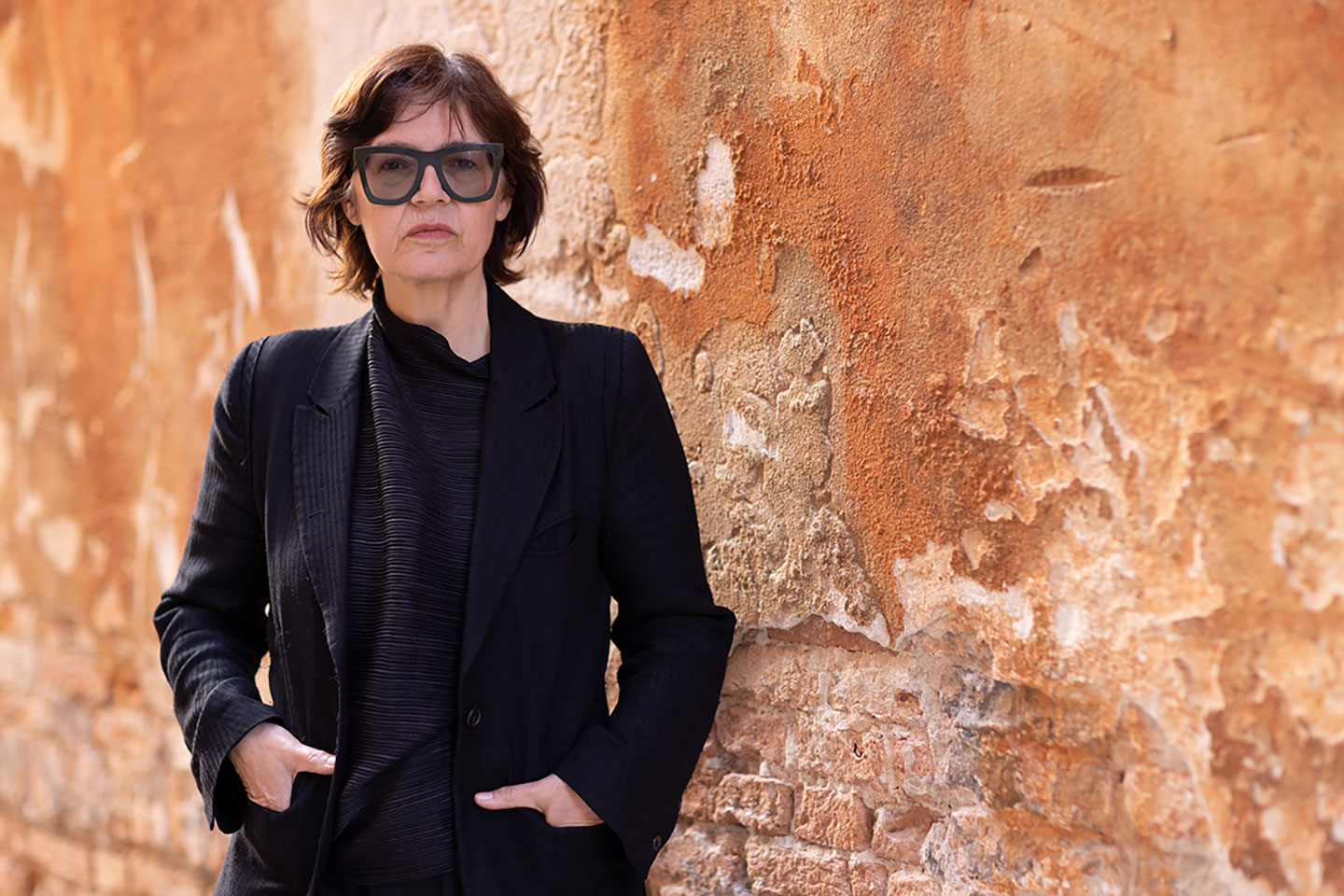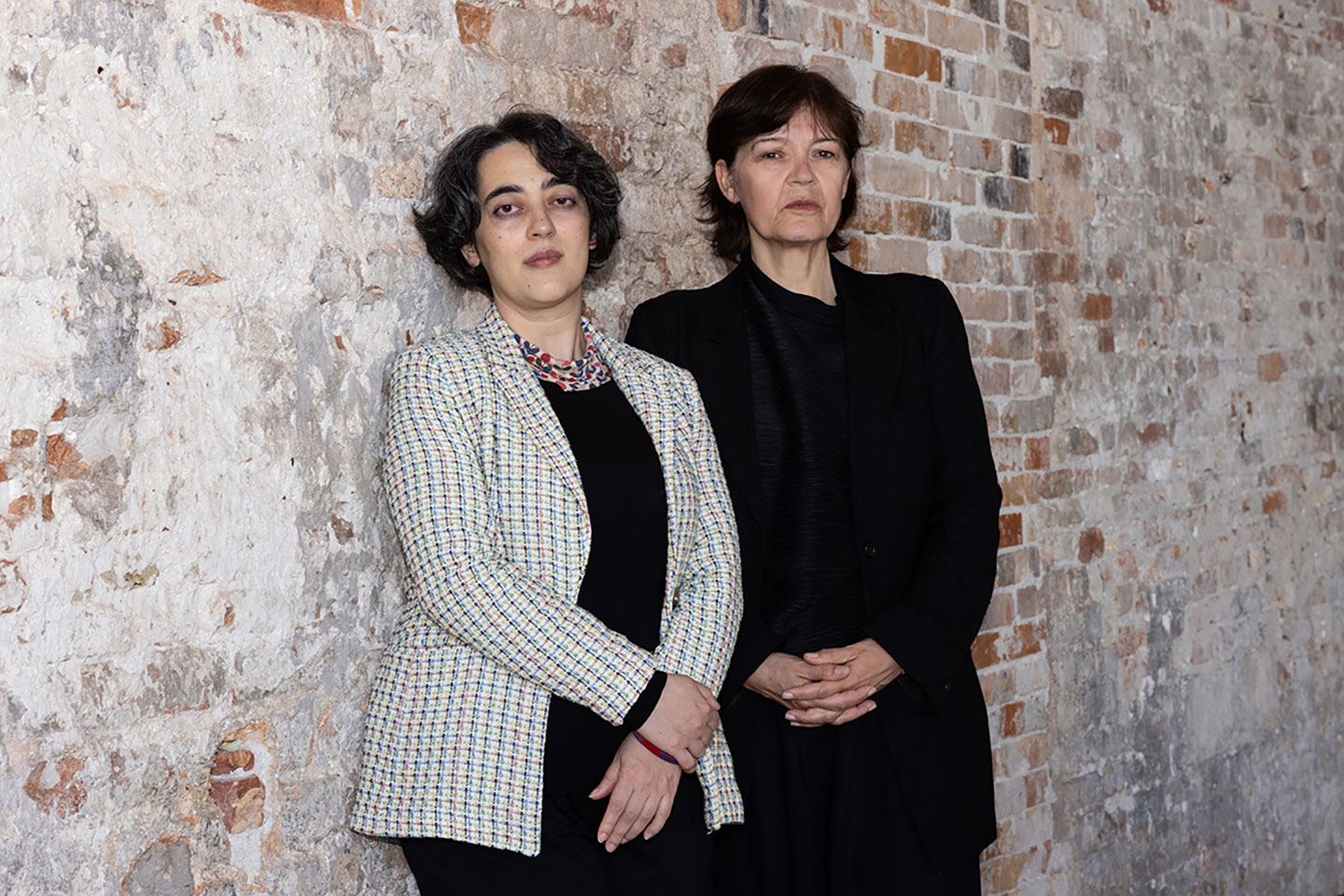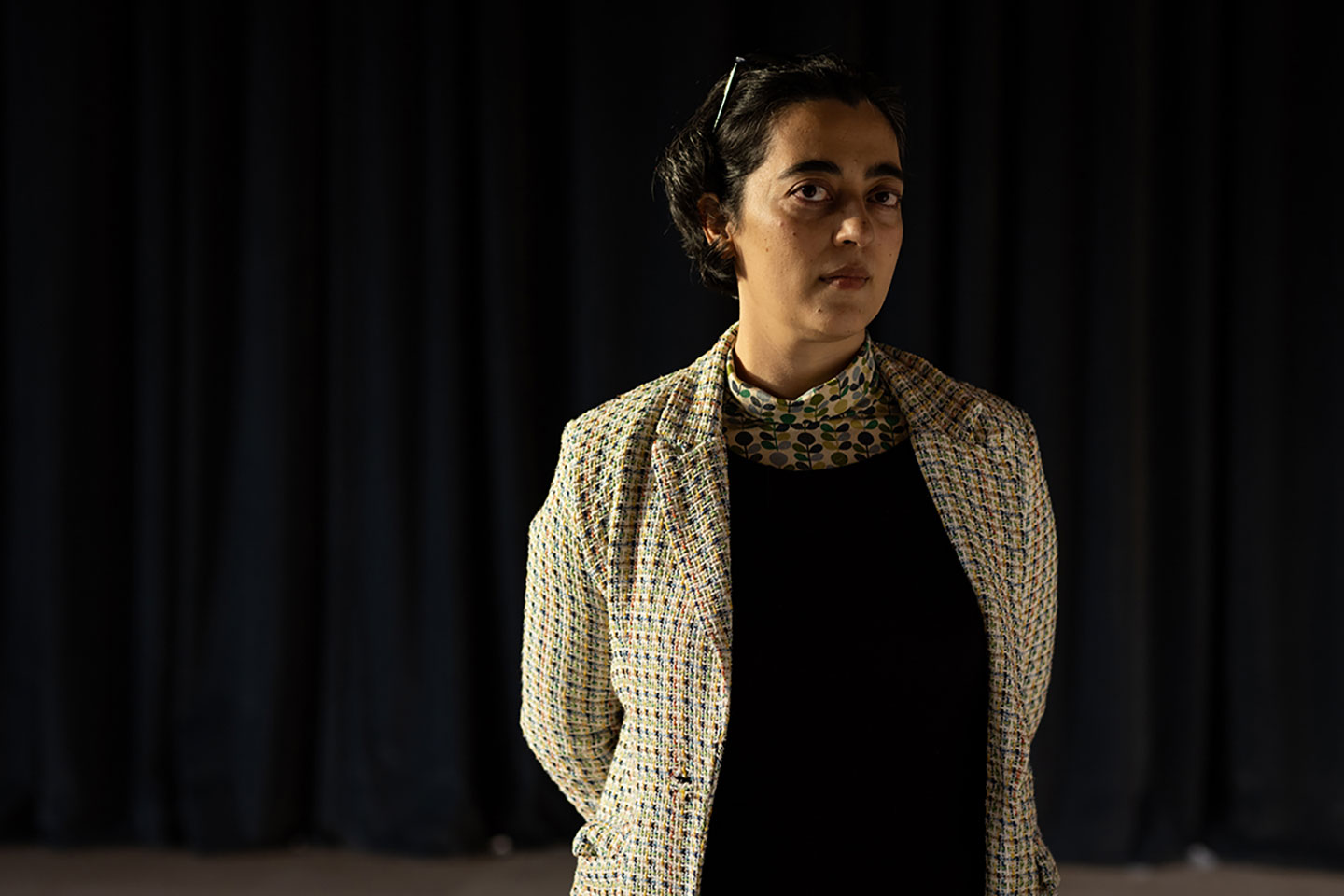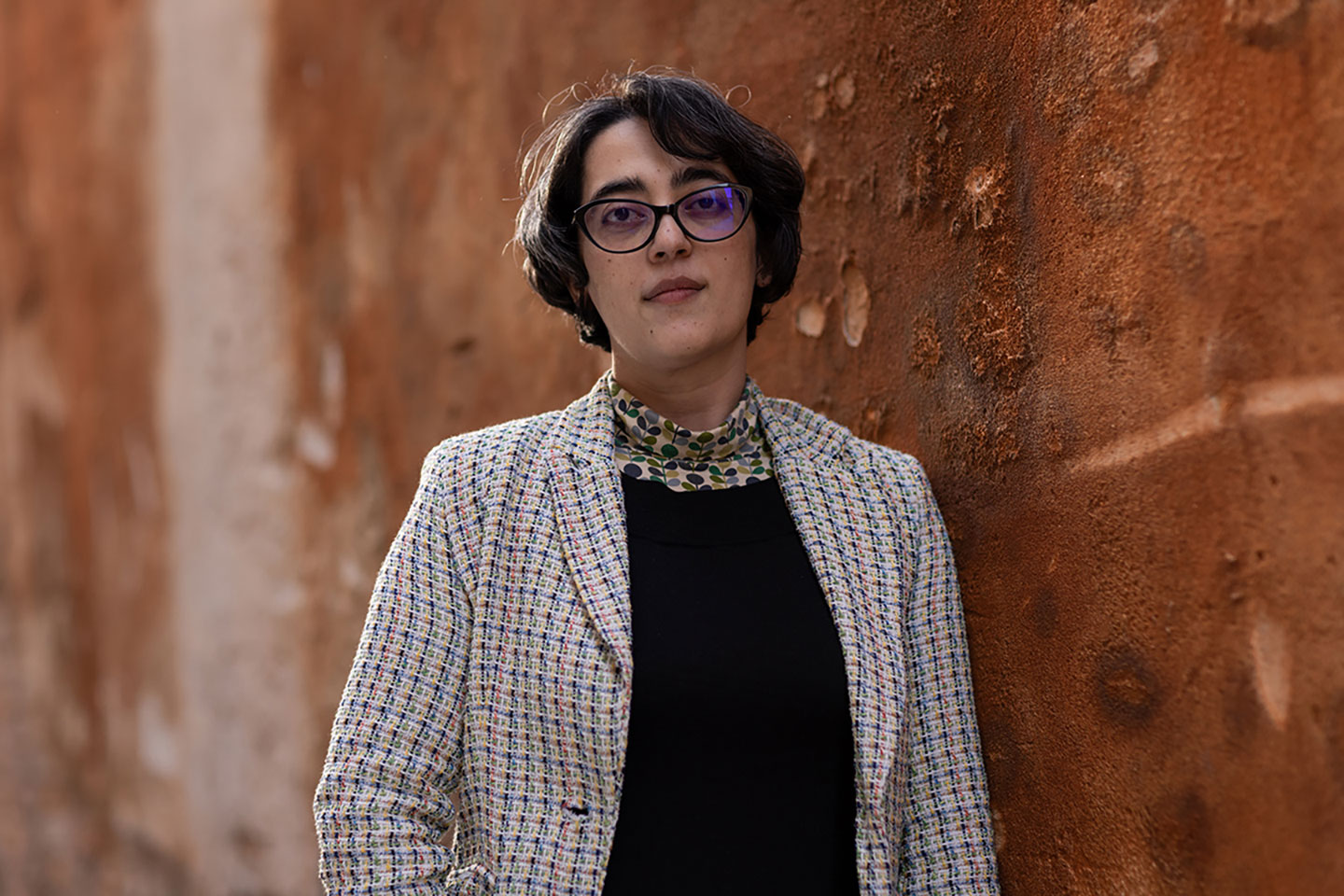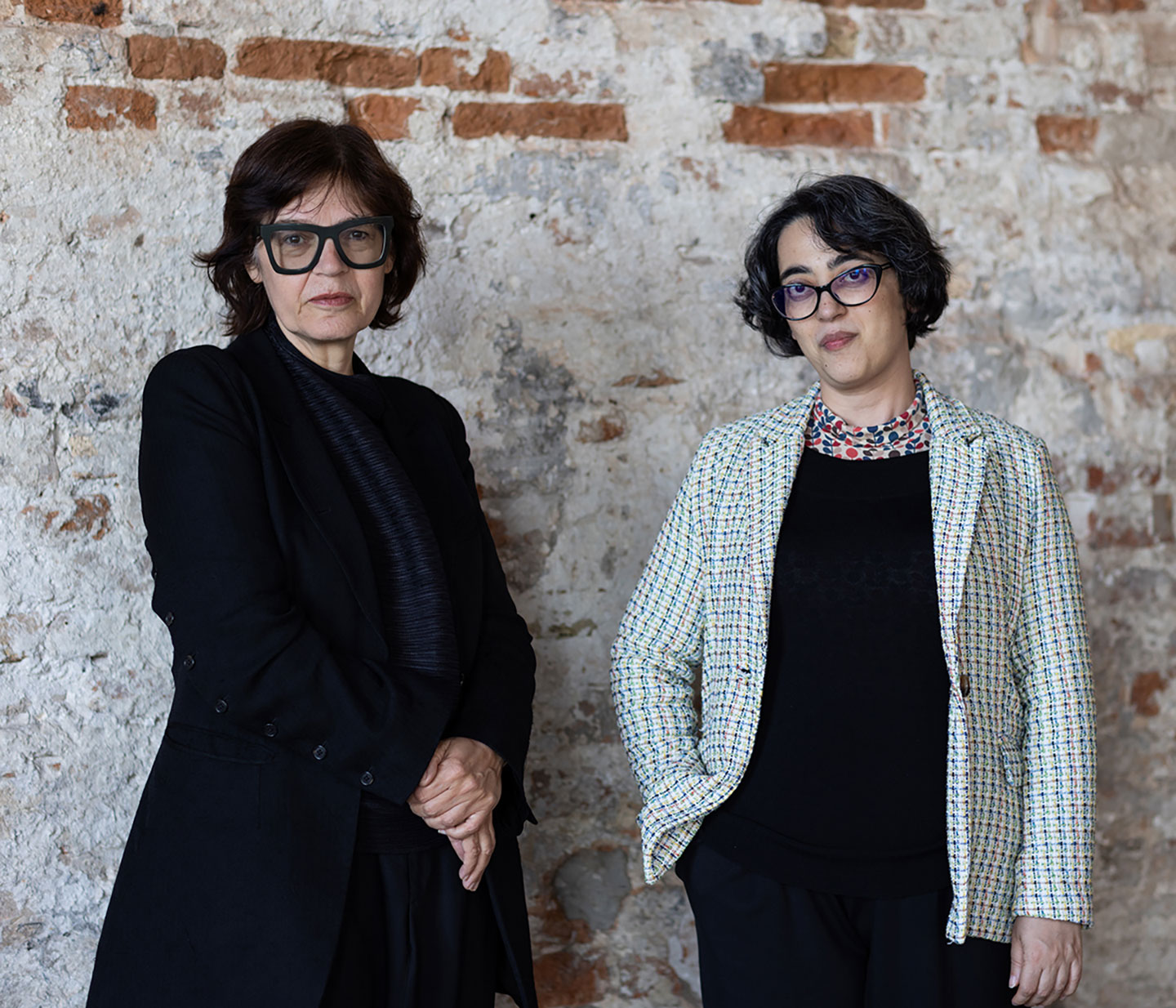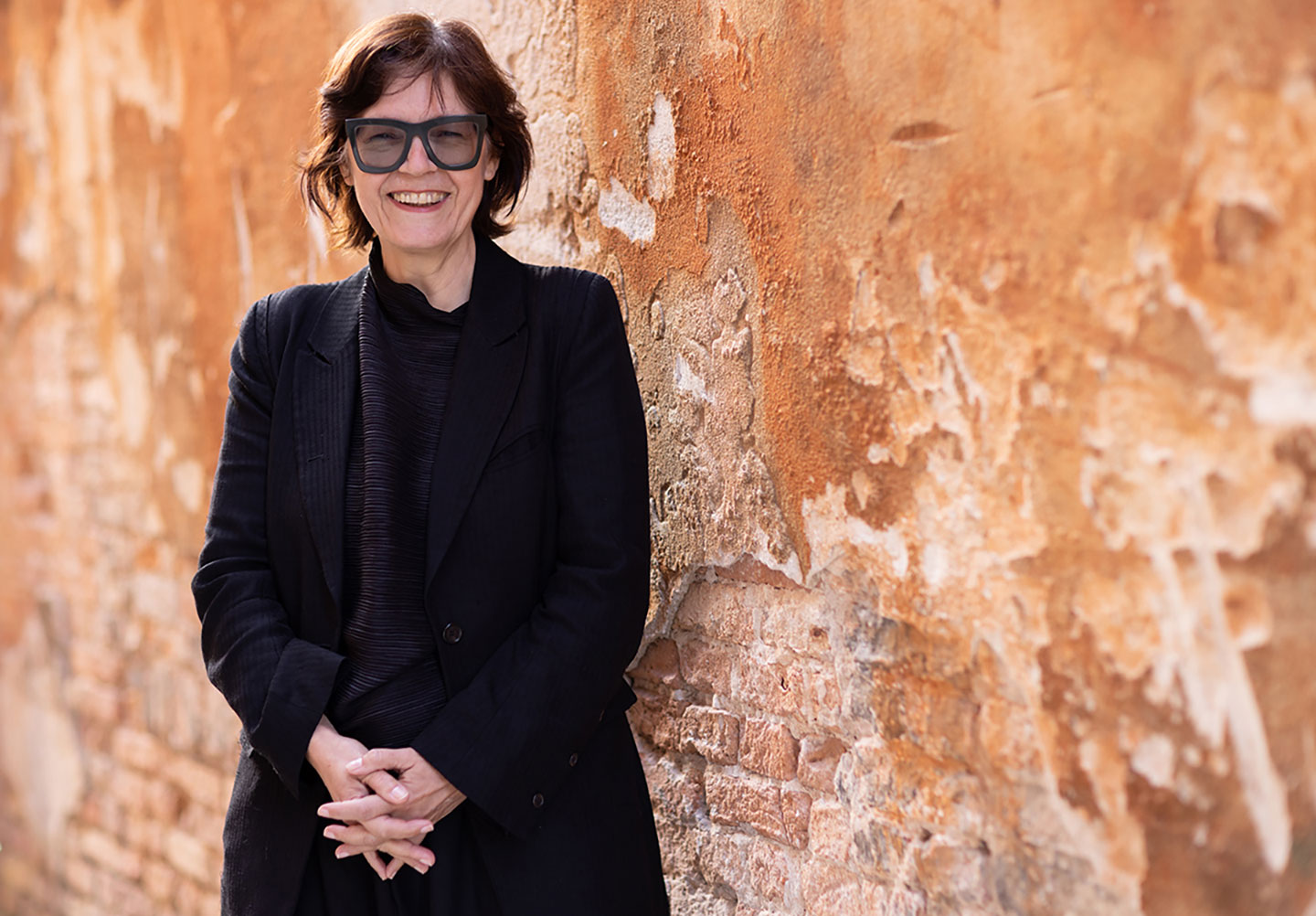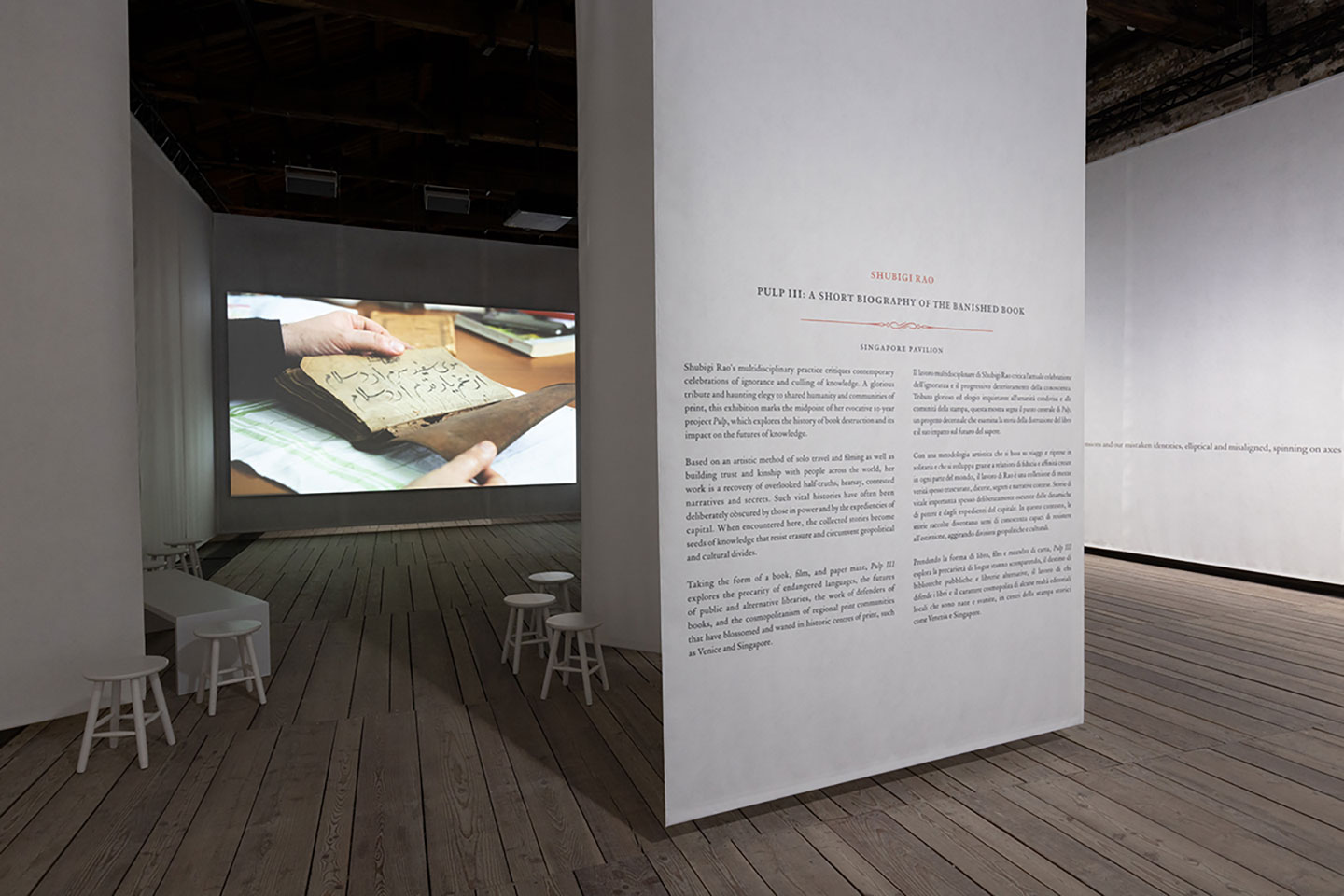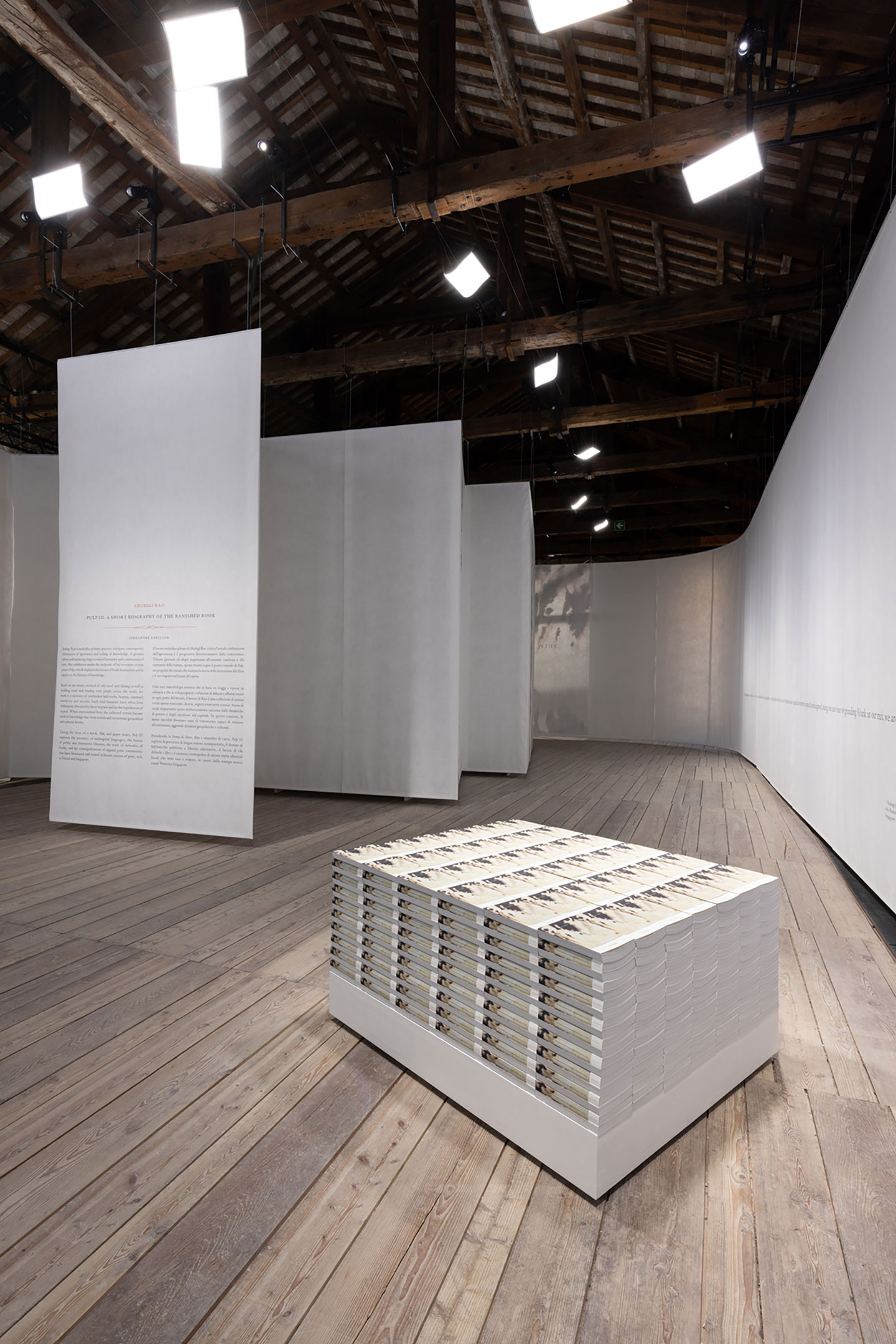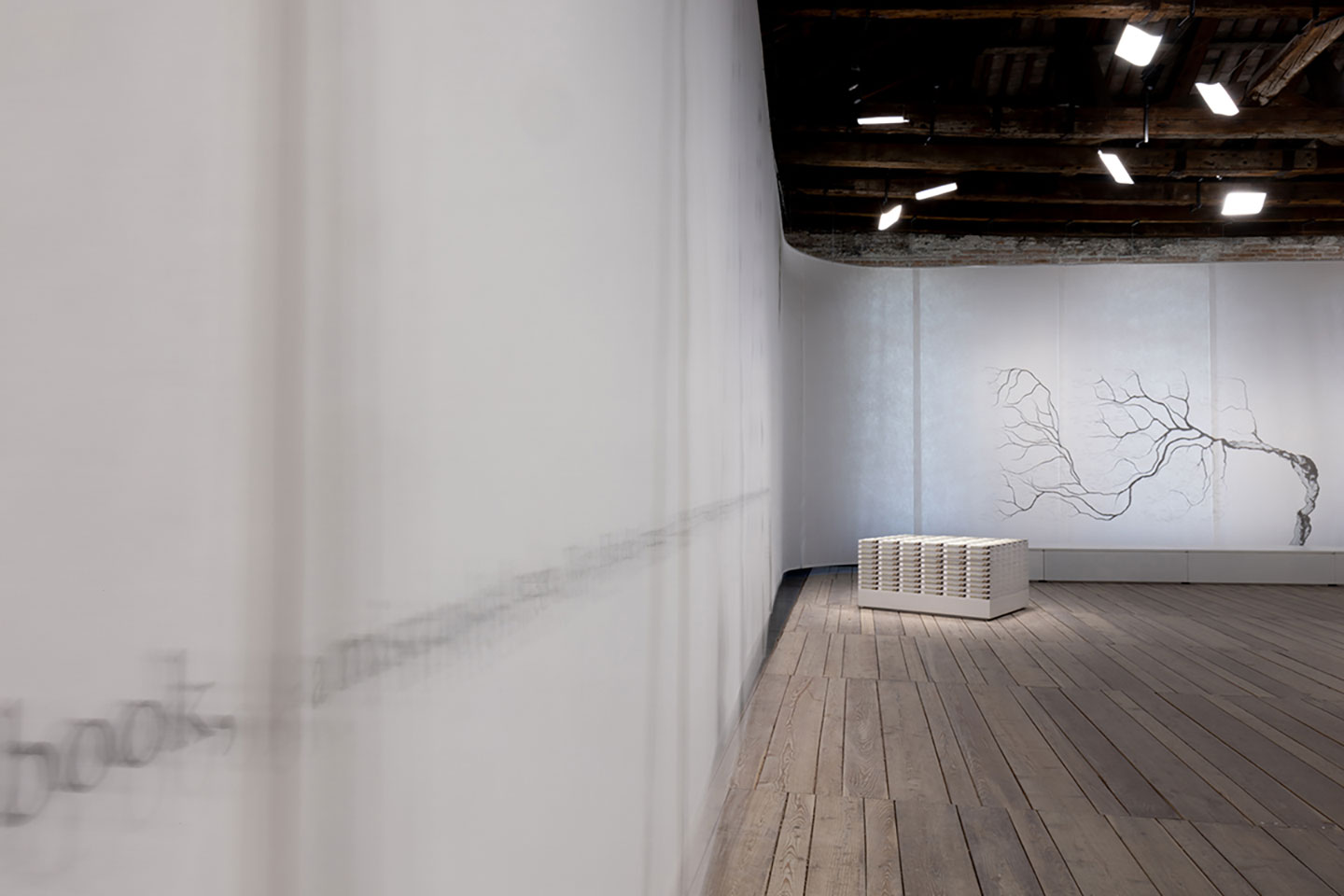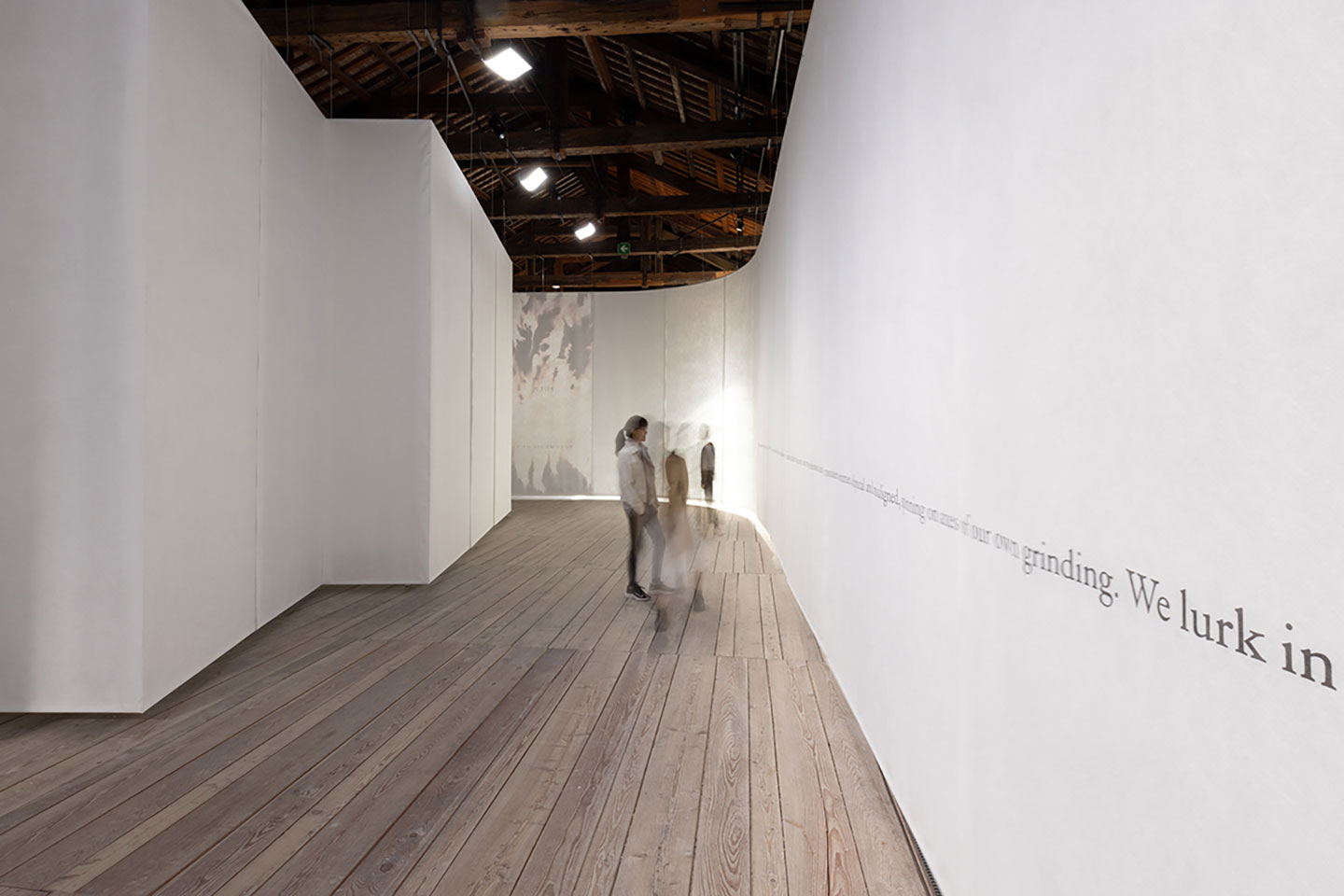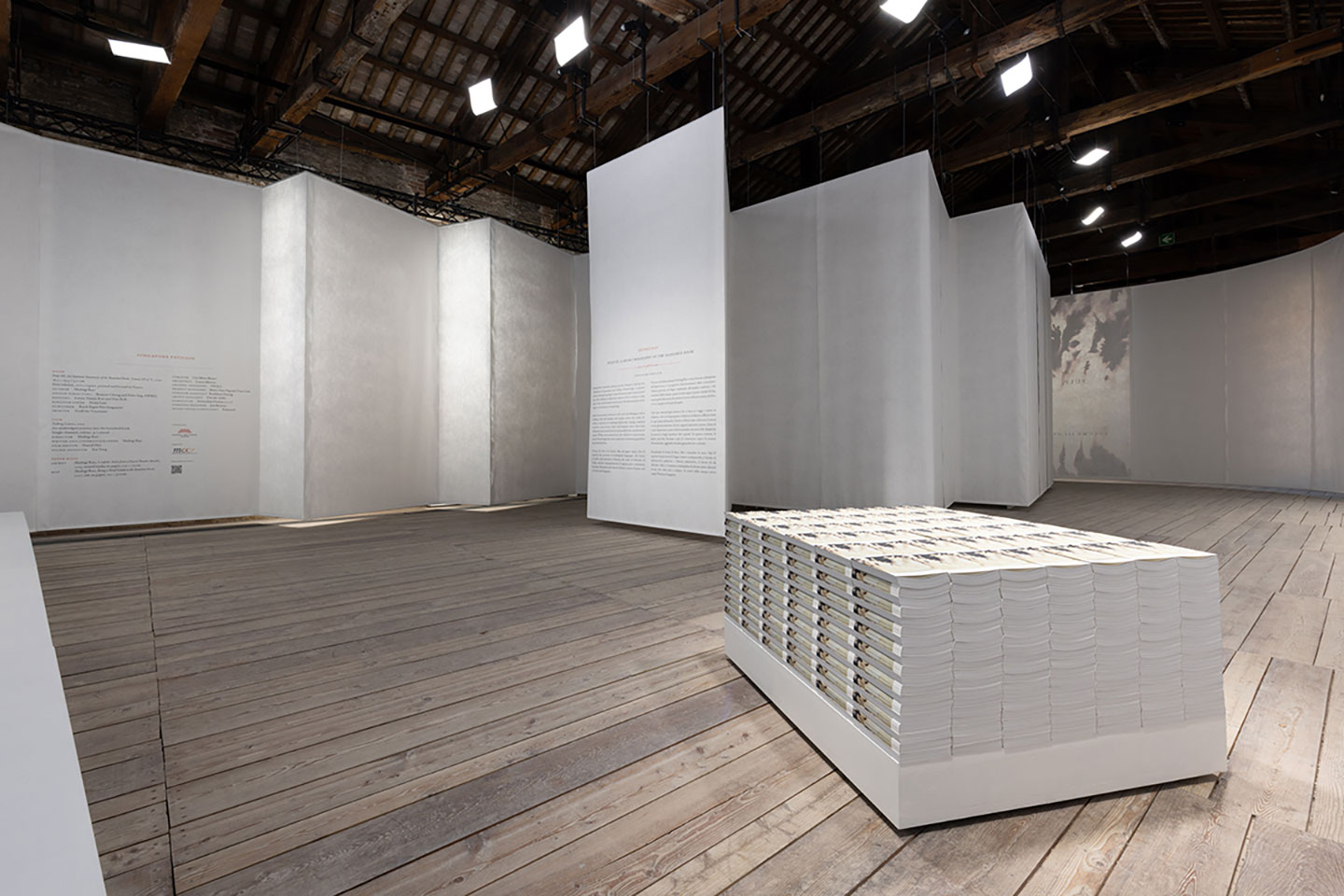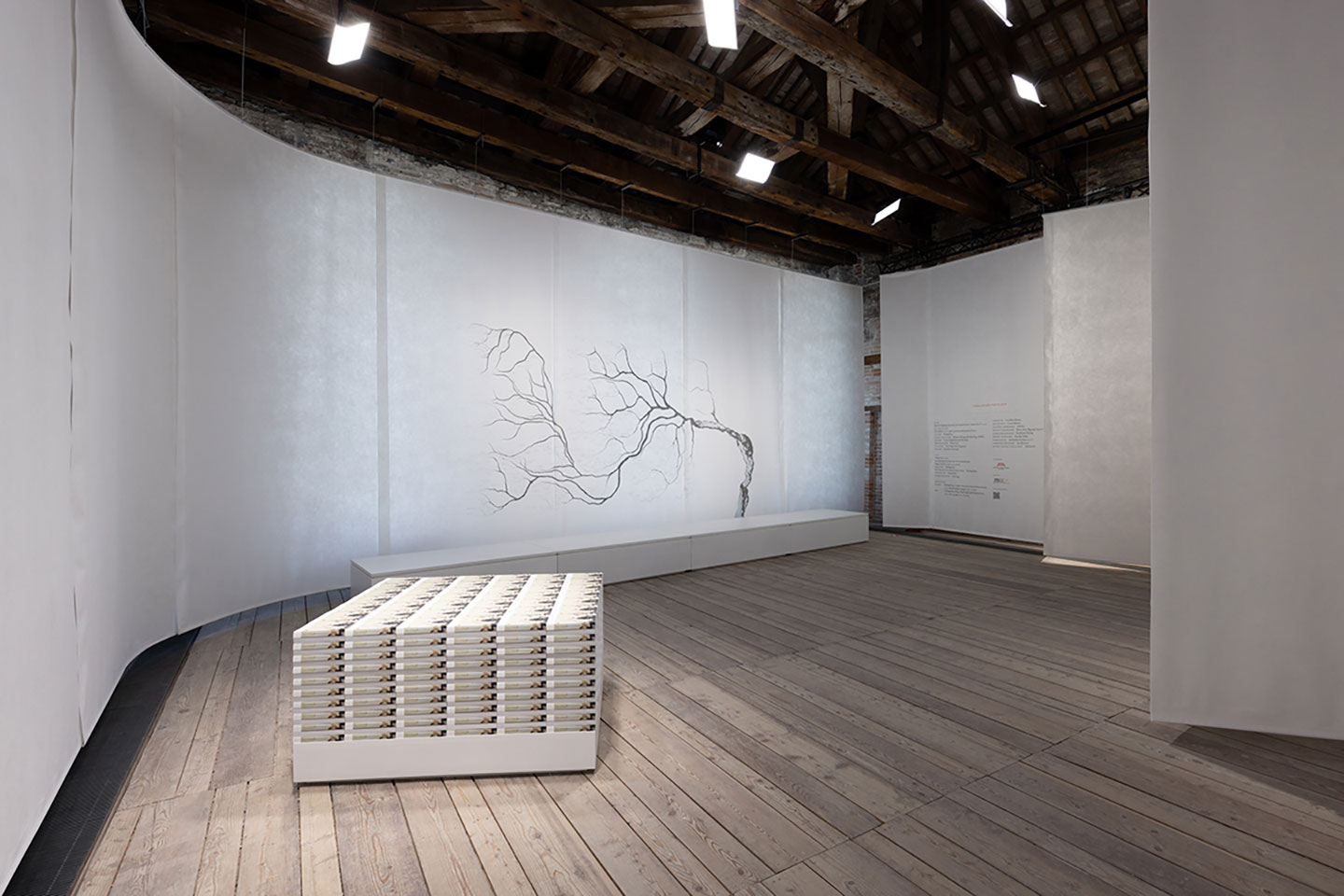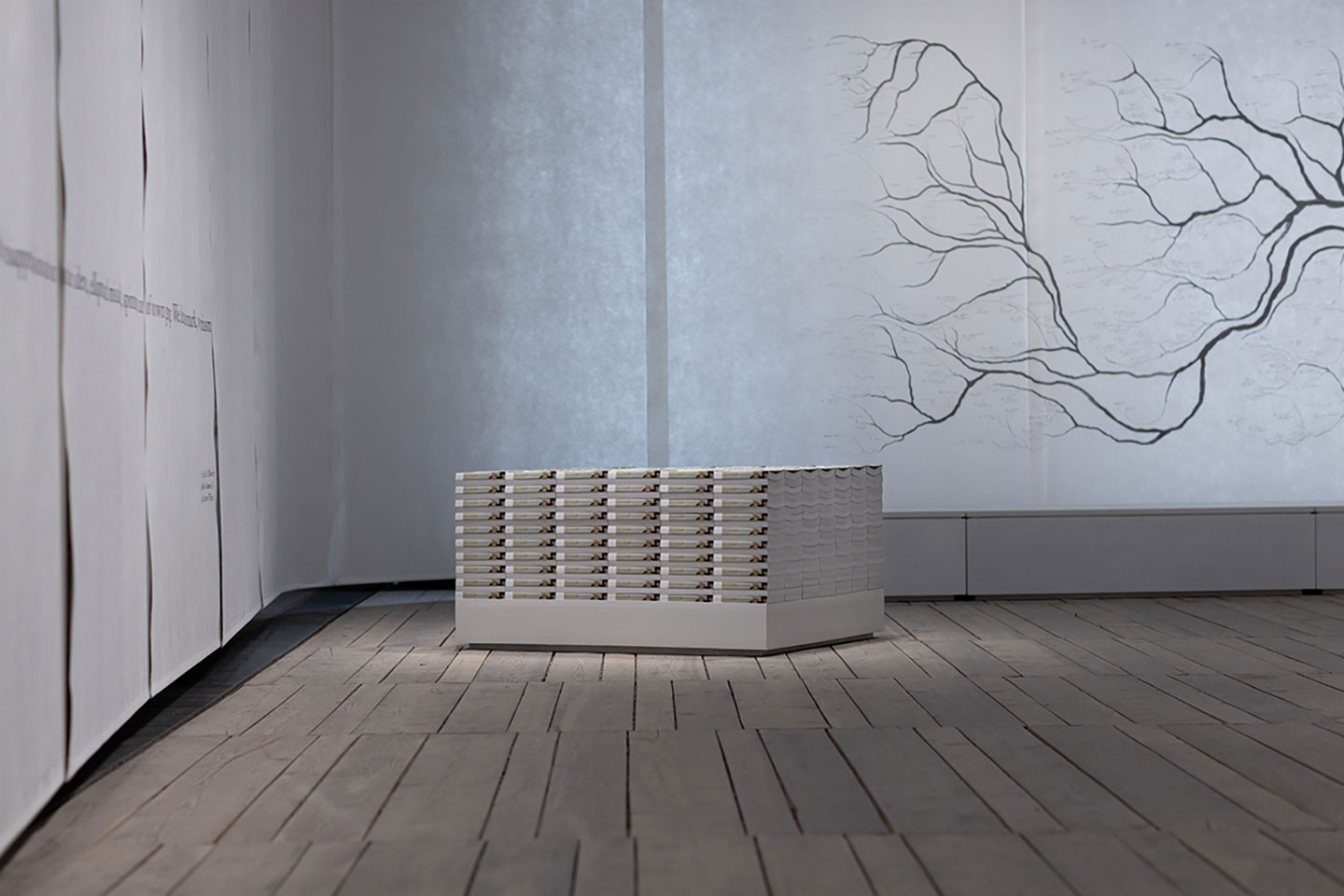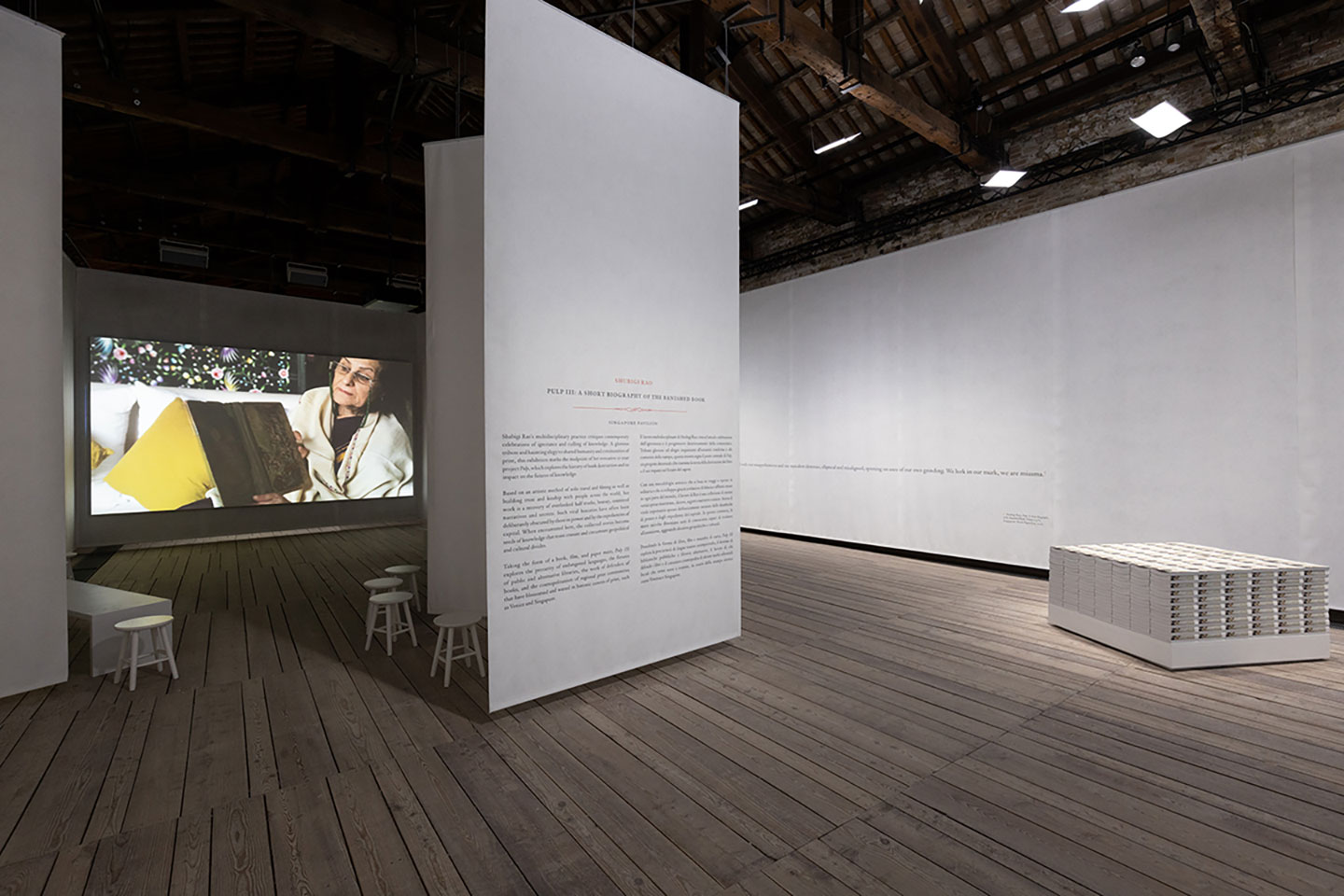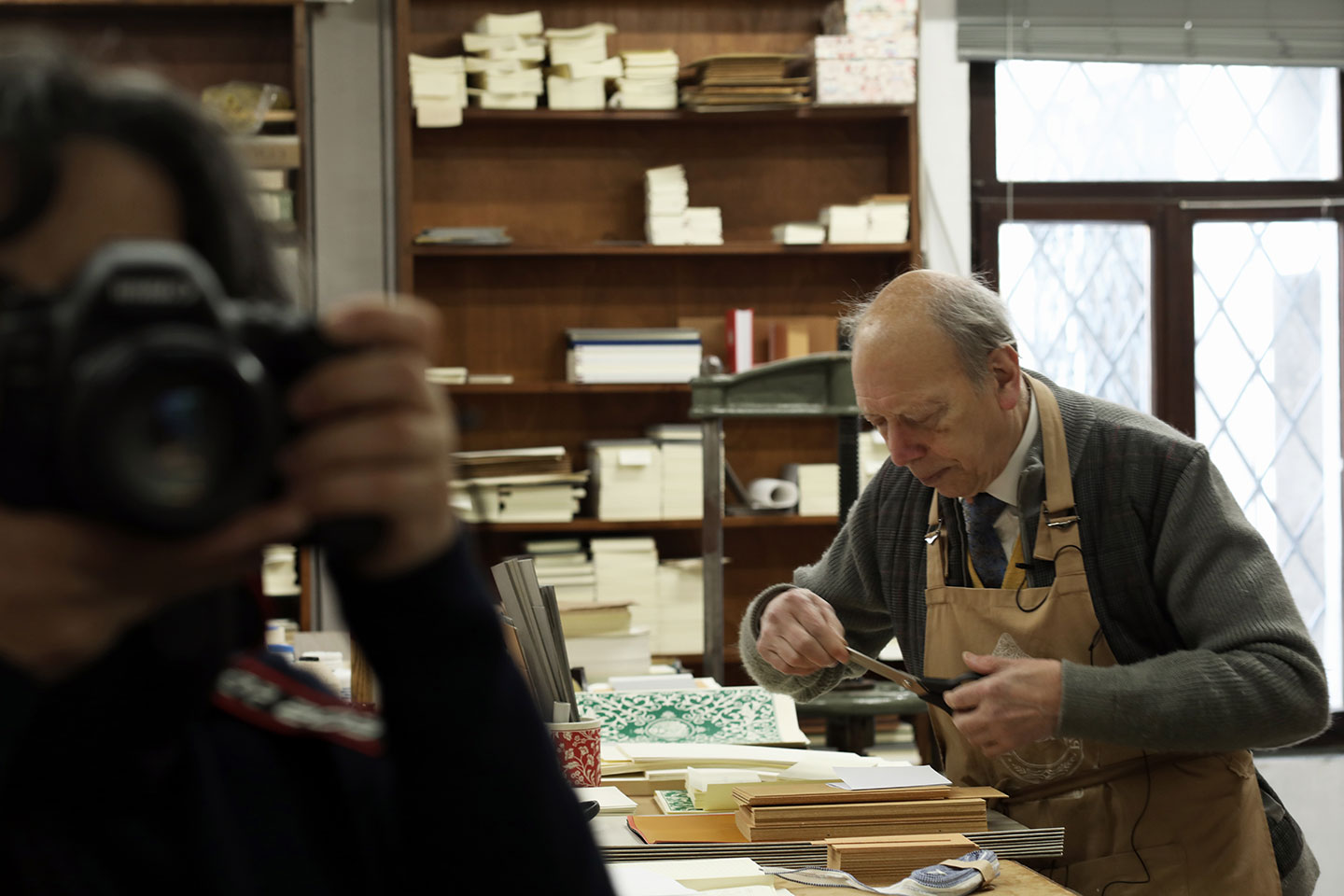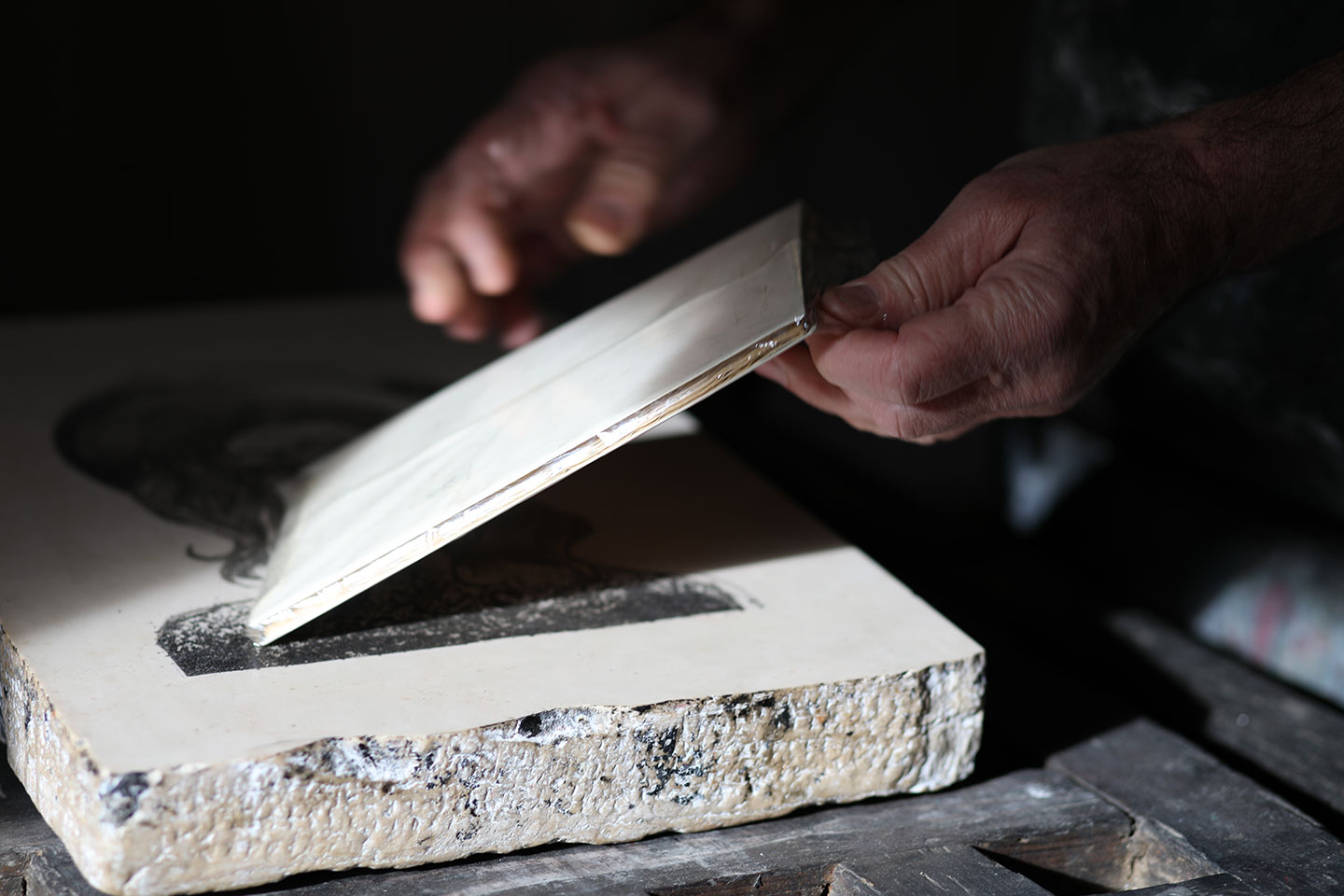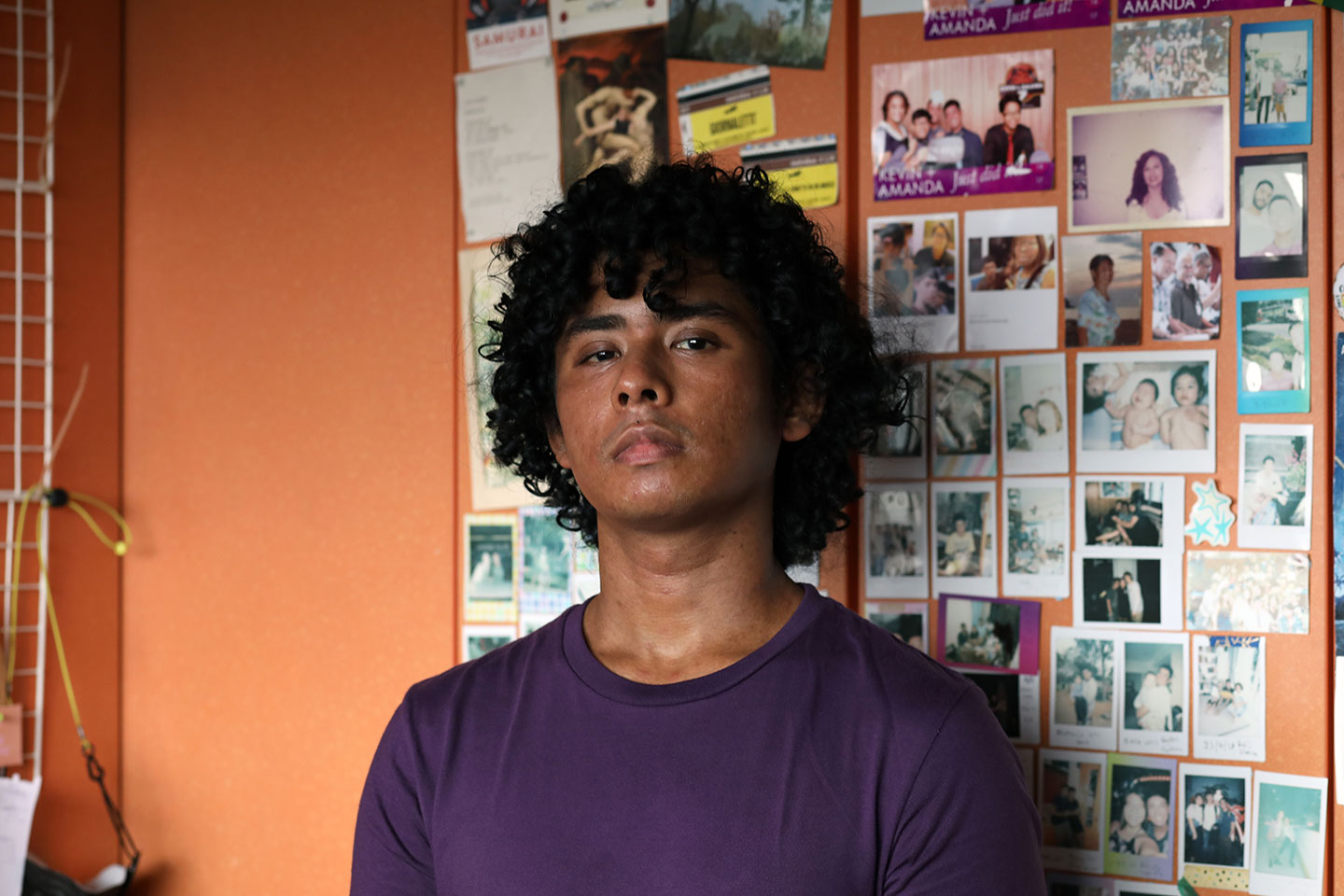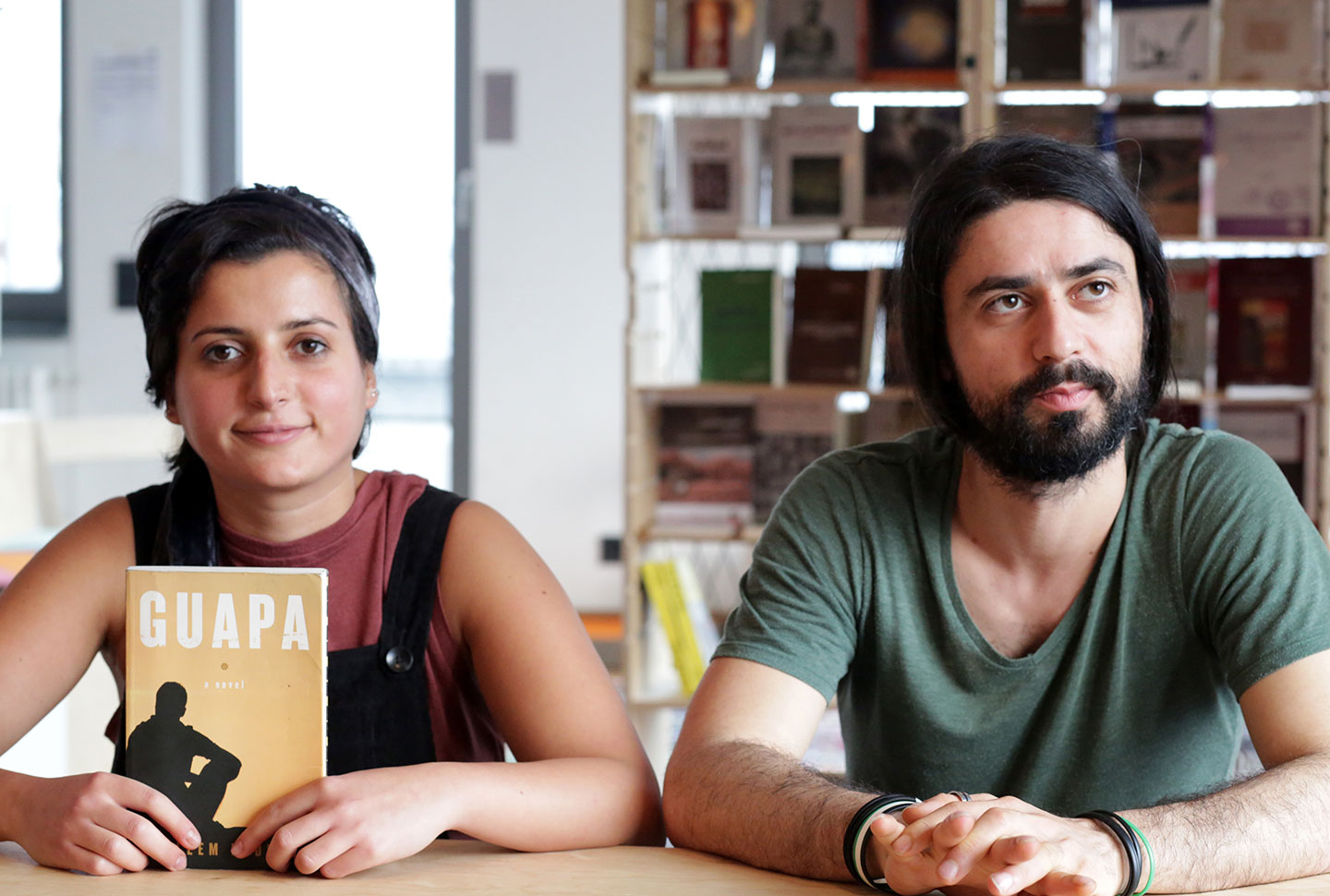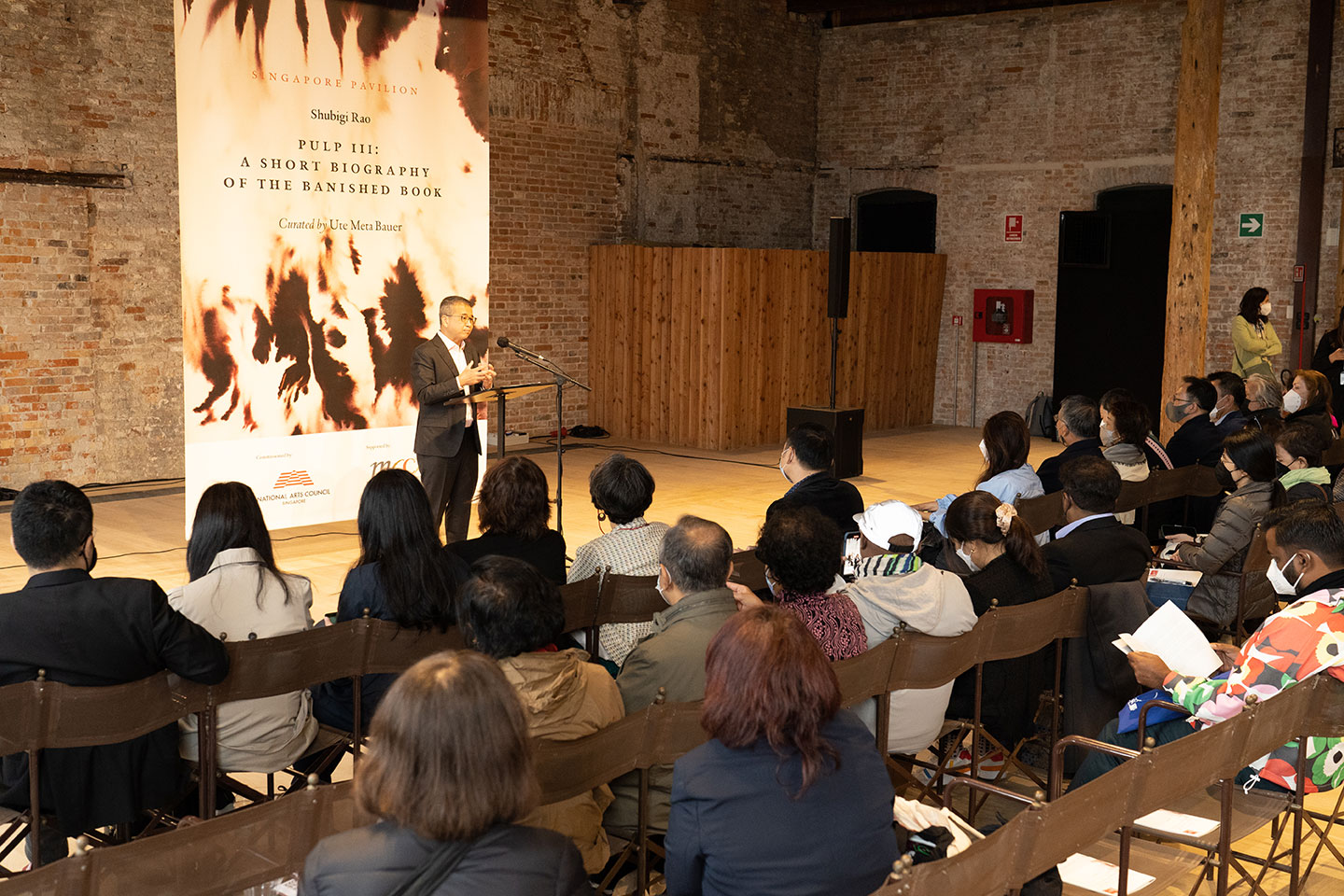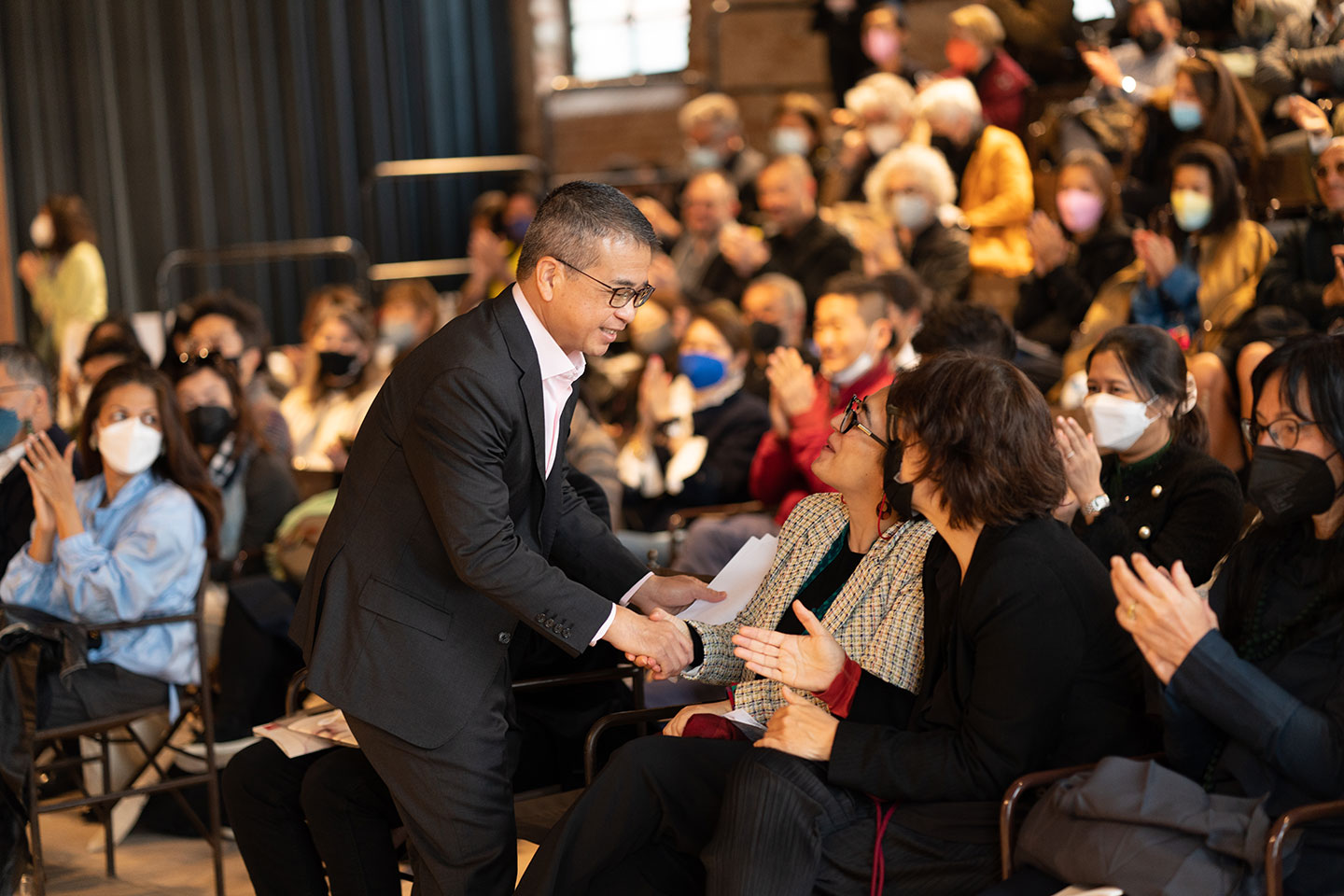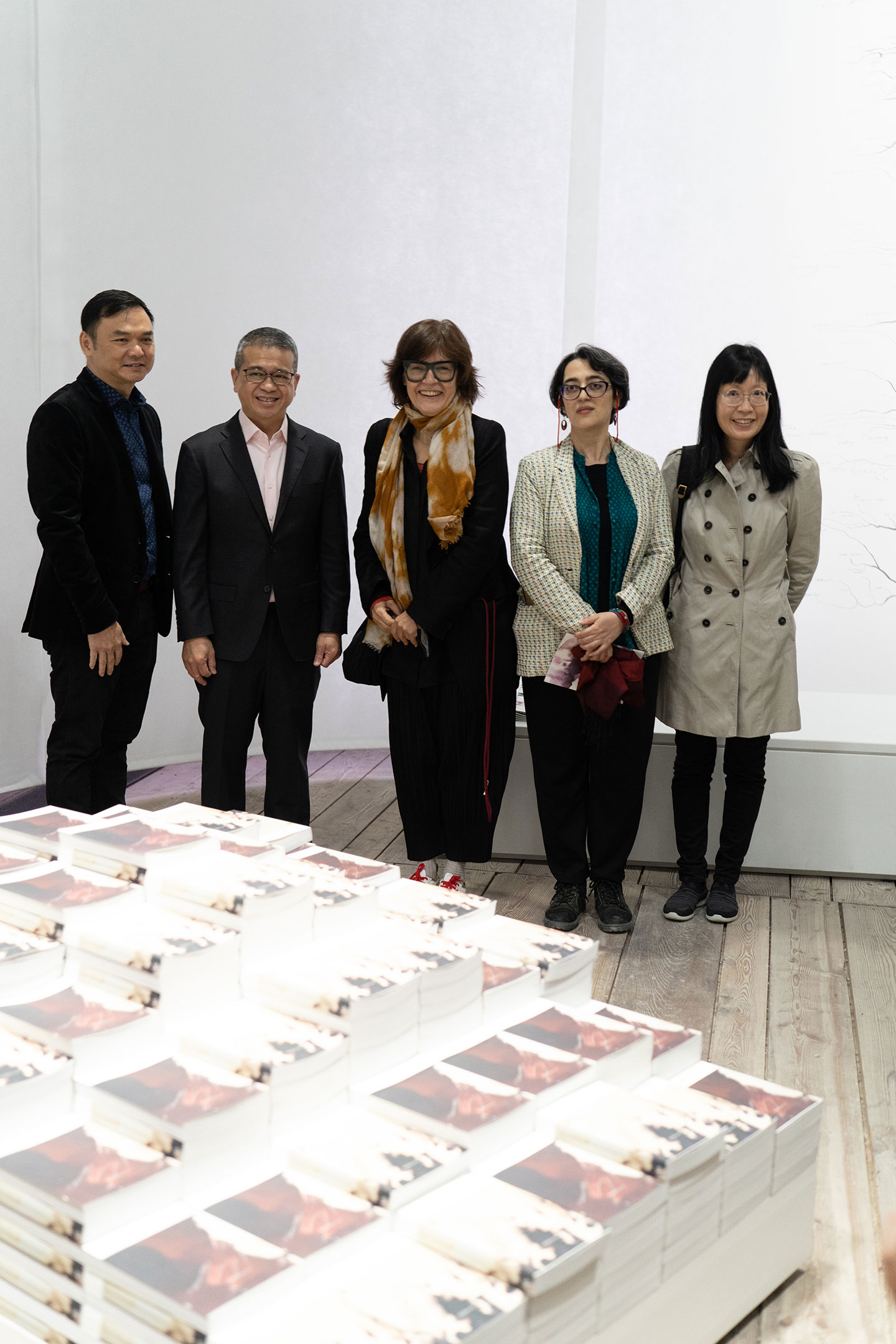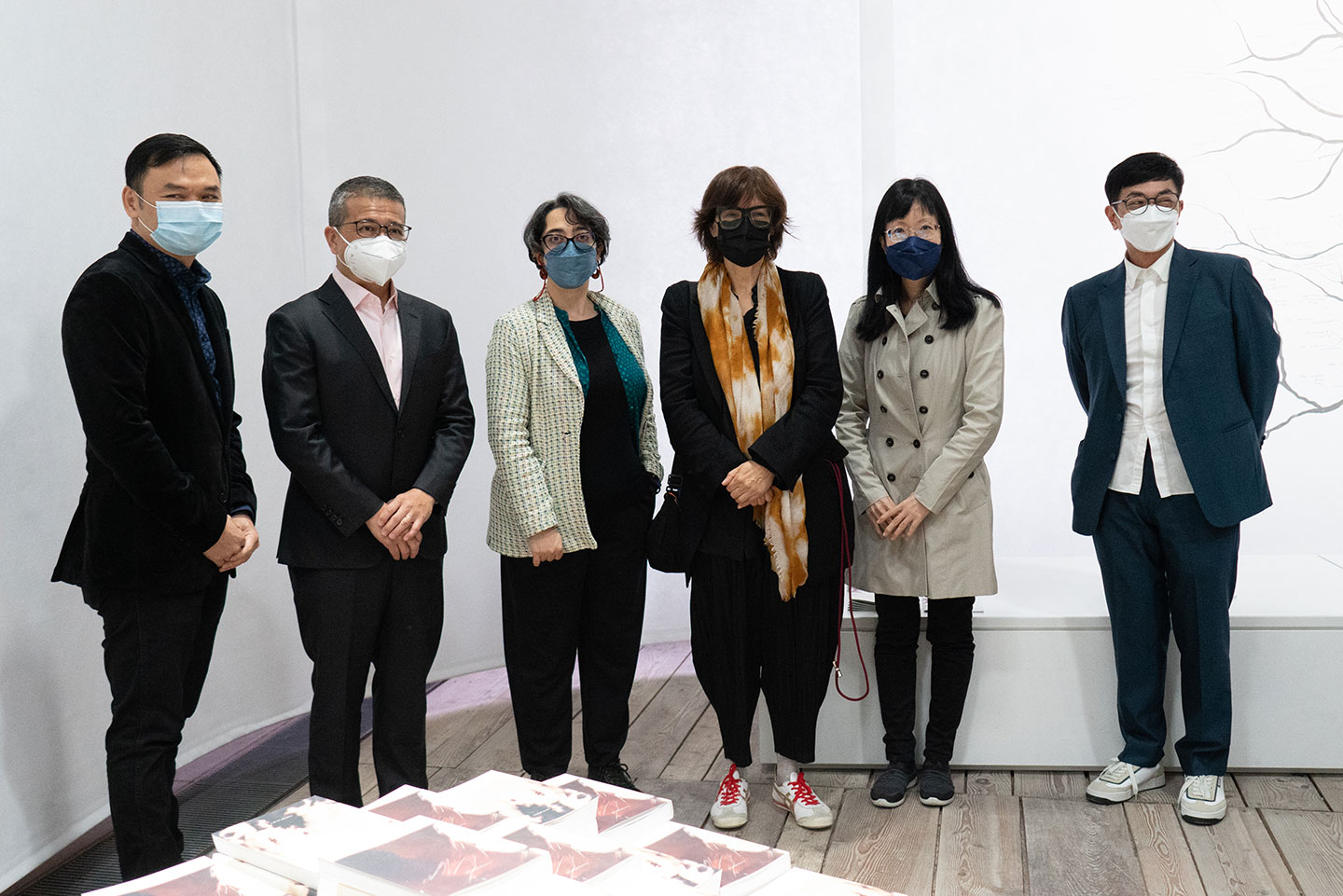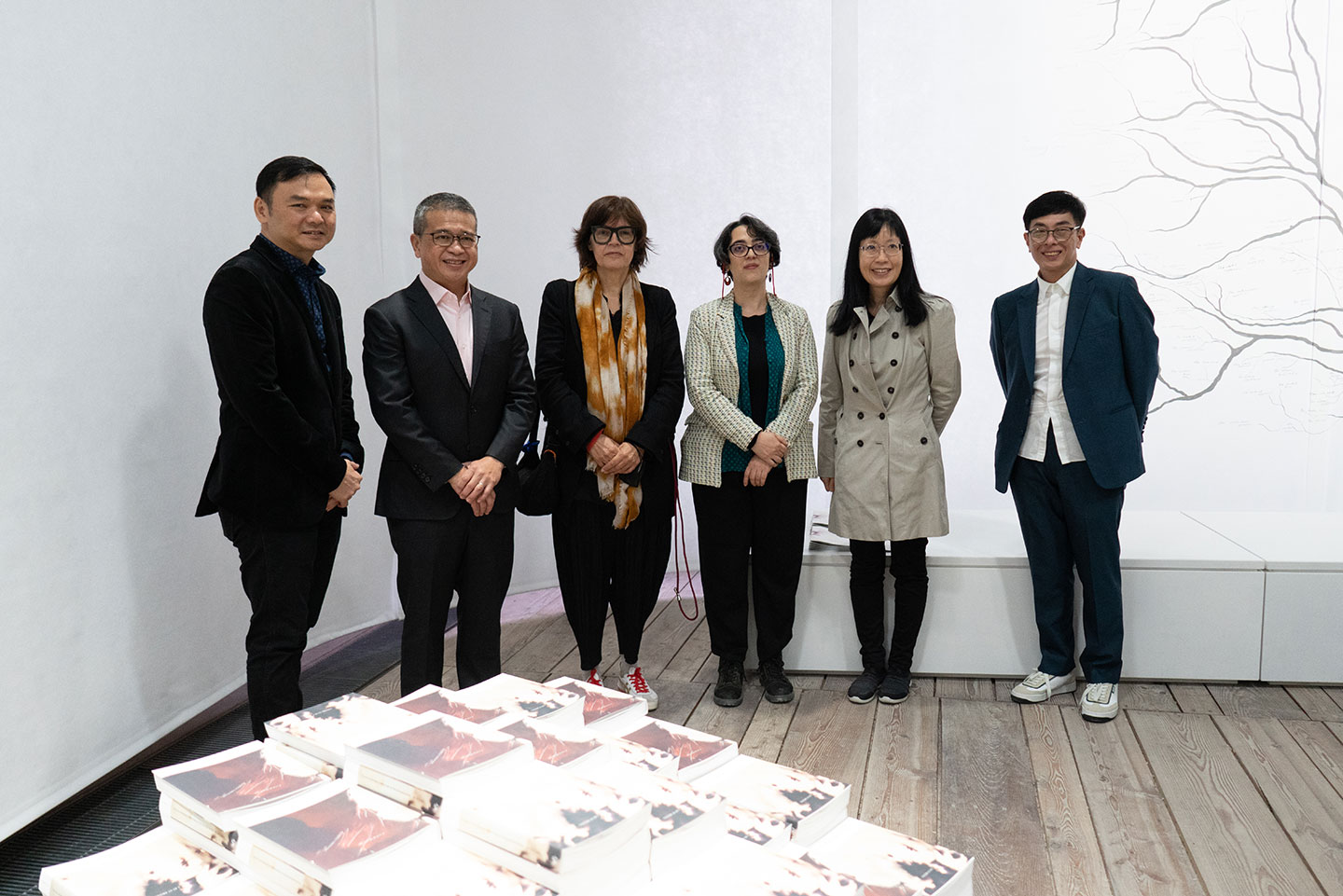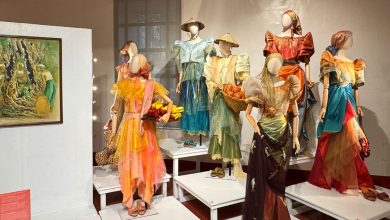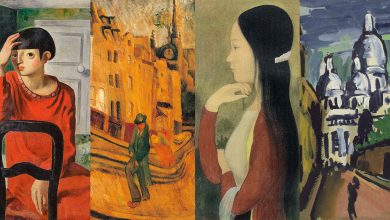VENICE, ITALY — Approaching the Pavilion entrance, one steps between what appears to be sheets of paper holding us within its folds, much like the enveloping that occurs in the act of reading. Entering the hanging paper maze, its layers unfold to reveal not only the architecture of a book, but also Shubigi Rao’s journey of discovery into the world of stories centred around books, for hundreds of chronicles are at the core of this work.
The next encounter is a multi-vocal filmic experience that explores, by way of personal confidences and poetic reflections, documentary and mythopoetic languages, the tales of those at the frontlines of saving books and libraries. These people speak of smuggling volumes out of danger, preserving endangered languages and vanishing cultures, while sharing the sorrow of losing access to personal and collective pasts and histories.
Partially filmed in Venice, a city that embodies a vital history of print and open access, the film Talking Leaves depicts, among other stories, how books from a now-defunct archive of women partisans and genocide survivors, are rescued.
Discussions about the historical connections of access to knowledge and political power with Italian professor of book history Mario Infelise are interwoven with conversations with Singaporean researcher Faris Joraimi about the cultural politics and intellectual history of the Malay world. Venetian librarian Ilenia Maschietto shares stories of banned books and her favourite books of resistance, while Marco Borghi explains how alternative archives can act as safeguards of democracy. The poet Bianca Tarozzi invites us into her library sharing the books that survived the devastating 2019 floods in Venice. Singaporean writer Melissa de Silva reads aloud from a book of idioms in Kristang, an endangered language of Malacca’s and Singapore’s Eurasian communities. Retired librarian Saralee Turner recites passages from ‘Not Out of Hate’ by Myanmar writer Ma Ma Lay, while another describes the threats to contemporary libraries and free knowledge. Through these stories, we see the book as the embodiment of collective thought, labour, and readership, and we recognise the book as an intimate holder of humanity and community.
Copies of Rao’s new book, Pulp III: An Intimate Inventory of the Banished Book (Pulp Vol. III), are arranged in a way that speaks of the monumentality of its format as a container of knowledge. Pulp Vol. III chronicles Rao’s long-term artistic research process and conceptual reframing of the book and the library, whilst adding new research on Singapore and Venice as historic centres of print. Over the course of the Biennale Arte 2022, this installation of books will change in form as they are dispersed into the world. For Rao, each book is a messenger, a time traveller, the embodiment of our need to communicate, and a rallying call to action.
In reference to the work, Shubigi Rao said: “What are our testimonies, and what is it we affirm? Are our certainties just circles of rationalising, restless half-truths, vivid imaginings and cynical manipulations? Or can we ask where the smallest form can speak to larger testaments? Every mark we read or see was made to bear witness to brief life and briefer designs. Every text then is a testimony, not necessarily of truth, but an illuminating of time, idea, of the facts and falsities of place and moment. In this way, the stories in the Pulp project point to different forms of courage, in action, in speech, in documenting and in sharing. These stories also make visible the nuanced forms of resistance in print, and of lives lived surrounded by books, of breathing air heavy with the weight of unread but priceless knowledge, of risking everything to save texts that are not theirs, and may never be read, but are also more than mere symbolic representations of their civilizations, or some idealistic notion of humanness.”
Ute Meta Bauer, exhibition curator, commenting on the pavilion, said that: “Rao employs the book and the moving image as formats of communication which tend to the parts in the story that have often been deliberately obscured by those in power and by the expenses of capital. The artistic research is deeply interested in the ‘keepers’ of culture, of histories, of herstories, of identity, wherein language becomes a home and a place of retreat to protect and yet lament that which is lost. At a time when the world is experiencing great loss – not just in terms of the human lives lost to the pandemic but also the forms and ways of life lost to the climate crisis – the exhibition at the Pavilion fosters an appreciation for what it means to persist, to productively and meaningfully live together.”
Edwin Tong, Minister for Culture, Community and Youth, said: “Art has the power to uplift and inspire us. Singapore’s milestone 10th year of participation at the Biennale Arte, and the first Singapore Pavilion presentation by an all-female artist and curator team, is all the more inspiring as it demonstrates to the world the diversity and range of talents in our visual arts landscape, and what our arts practitioners are capable of. MCCY will continue to work closely with our arts community to support their endeavours to fly our flag high around the world. We welcome everyone to celebrate, connect, and reflect through Shubigi’s showcase.”
Rosa Daniel, Chief Executive of the NAC Singapore, expressed: “Pulp III is an expression of Shubigi’s deep love and respect for the literary medium and its people, inspiring reflection on our diverse and shared histories as a modern, global village. Over the years, NAC has strongly supported Shubigi in her practice, and her participation in the Singapore Pavilion with highly respected curator Ute Meta Bauer is a significant milestone in her artistic journey. Through this presentation, Shubigi and Ute seek open connections across borders, cultures, and mediums at the Singapore Pavilion. The Singapore Pavilion at the Biennale Arte affirms the Council’s commitment to promote and profile Singapore’s arts and artists overseas. We believe that Singapore’s participation will contribute to raising its profile as an emerging centre in Asia for artistic collaboration, production and research.”
Join the Singapore Pavilion via Facebook and Instagram (@NACSingapore), and hashtags #SingaporeInVenice #ShubigiRao #PulpBanishedBook #BiennaleArte2022 and #TheMilkOfDreams.

